Experts Talk Trends in NewSpace
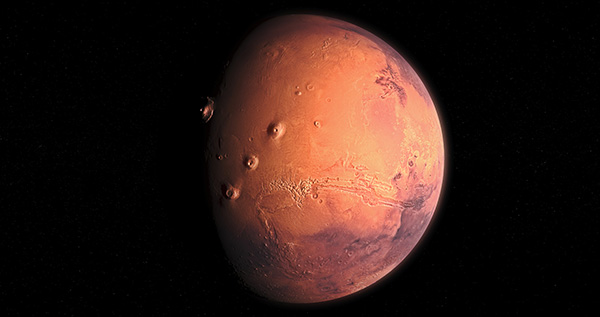
Oct. 20, 2023 - “We’re in a new era, the renaissance of the next generation of NewSpace,” said Blue Origin Chief Architect Robert Moeller at the UCI Samueli School’s NewSpace Symposium. The forum gathered experts from leading space companies to discuss upcoming trends and engage with UCI students interested in the field.
Moeller was joined by leaders from NASA’s Jet Propulsion Laboratory, Northrop Grumman, Relativity Space and Terran Orbital in panel discussions, and company representatives spoke with students about career opportunities.
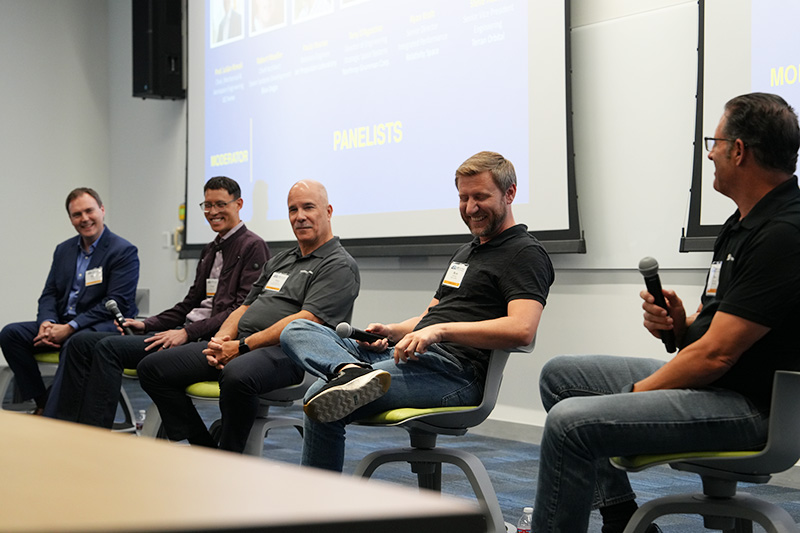
Boundless possibilities
Citigroup projects that NewSpace will become a $1 trillion industry by 2040. Blue Origin, an aerospace manufacturer founded by Jeff Bezos, envisions millions of people working and living in space in the future. These projections mean promising opportunities for young people.
It also means mankind may be able to tap into a whole new realm of resources. “We have to be able to use in-space resources,” Moeller said. Blue Origin aims to harness resources in space to help solve problems like climate change. It’s also striving to build reusable sustainable rockets.
Relativity Space launched the world’s first 3D-printed rocket in March. The panel said in-space manufacturing is a key direction for the industry. “We need to be able to manufacture in space,” said JPL Robotics Engineer Paulo Younse. “NASA is using 3D-printed parts and secondary structures. They’ll eventually print whole rockets.”
AI in NewSpace
The experts also agreed that one way AI could help the NewSpace sector is by aiding humanity to navigate complex unfamiliar environments. “In aerospace, the biggest unknown is the environment,” said Steve Hobart, senior vice president of engineering at Terran Orbital, a leading manufacturer of small satellites. He said AI would excel at helping humans analyze systems and environments to determine where they may fail and to find solutions.
AI is also poised to play a big role in how engineers do their job. “AI can help optimize engineering,” said Relativity Space Senior Director of Integrated Performance Ryan Kraft. “The way you do engineering in 10 years will be completely different.”
Kraft proposed a way machines can make themselves useful: “There are so many moving parts. AI can help regulate space traffic.”
NASA versus industry
The NewSpace experts also defined the distinct roles of private companies and the government in the field. The ability to fail is one aspect that sets private companies apart from NASA. “Companies want to iterate,” Kraft said. “They move fast and go to broad applications like sending people into space for tourism.”
“Your ability to fail leads to your ability to discover,” said Northrop Grumman Director of Engineering Tony D’Agostino. He encouraged students, “Don’t be afraid to fail going forward.”
Government missions, meanwhile, have a different pace and priorities. Younse said that NASA focuses on 10-year missions that develop top technologies and answer important science questions. The government is also suited to regulate the industry and figure out issues like governing debris in space.
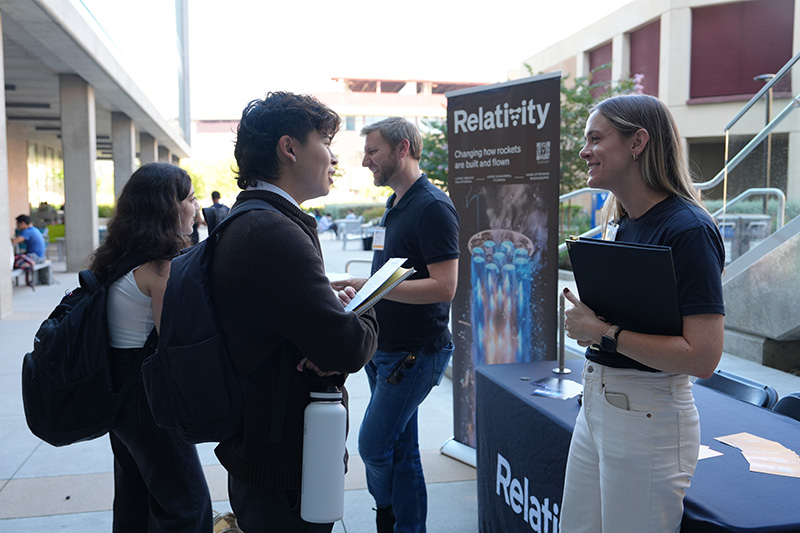
Diversity
Along with the fast-paced growth of the industry, the experts cited another promising trend for students: the need for diversity. D’Agostino said groupthink was one of the past causes of failures in space and demonstrates why a multitude of perspectives is important to helping the industry realize more successful missions.
Future missions will also involve international collaboration, Younse said. Ventures in space will require a global effort. “The space future is for all of us,” said Moeller. “We need diversity and an interchange of ideas. We’re going to build entire new cultures.”
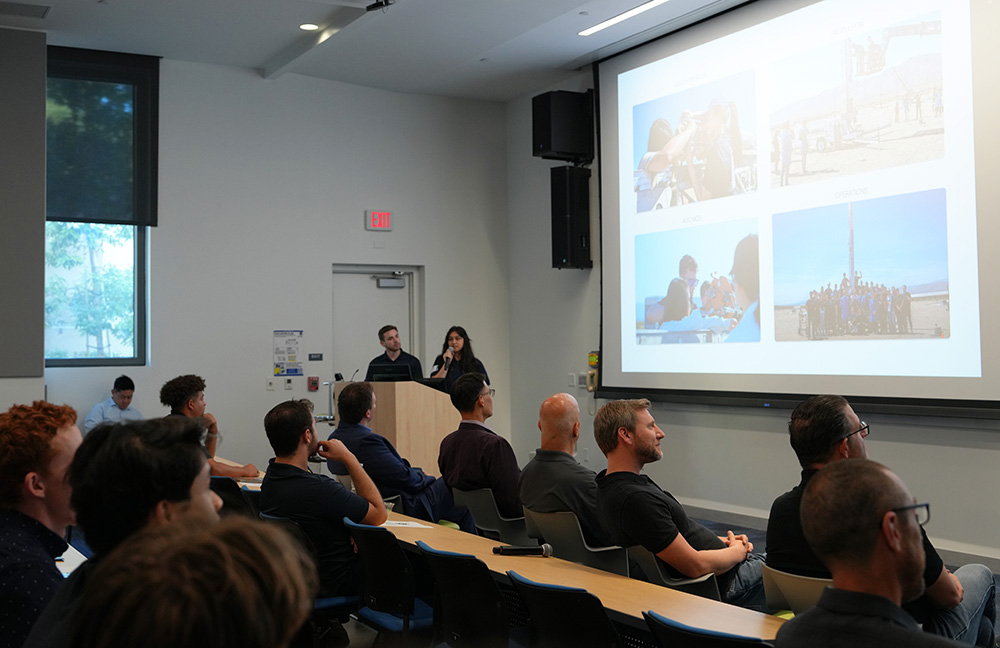
Networking opportunities
The symposium included a presentation by students from the UCI Rocket Project and ample time for students to network with industry representatives. Companies also hosted booths to welcome student inquiries about job opportunities.
The NewSpace leaders applauded the UCI Rocket Project’s successful launch this year of a rocket fueled by methalox, the most cutting-edge fuel in the industry. The UCI Rocket Project is one of only a handful of undergraduate teams in the nation that have launched a methalox rocket.
UCI Rocket Project Liquids Team Operations Lead Kyle Deck said he enjoyed listening to the panel. “I felt like I was sitting in on a live podcast filled with the perfect blend of high-level engineering topics and relevant stories.” He said it was great to have real conversations with company representatives rather than just relying on resumes to connect.
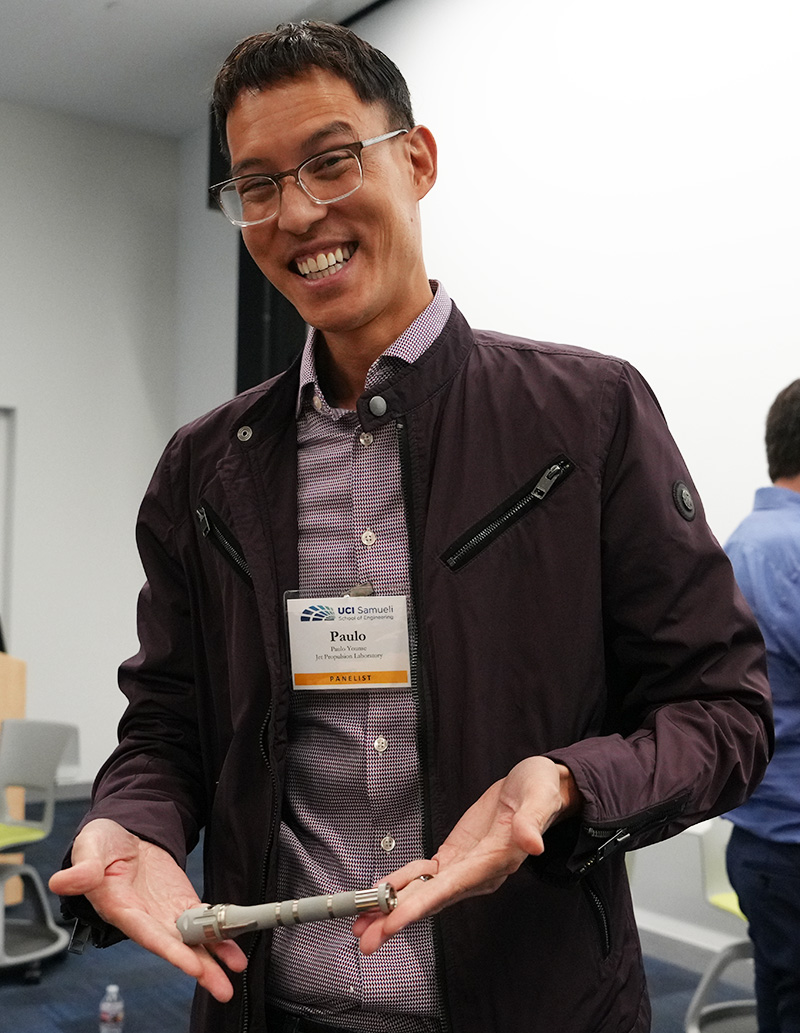
Panelists were impressed with the students too. “They were inquisitive and asked a lot of questions not just about engineering, but higher-level issues like innovation and project management,” said Younse.
Students enjoyed the networking opportunities and gained career inspiration. “Blue Origin showed me people are working on sustainable infrastructure systems in space,” said aerospace engineering major Anna Park. “I want to be a part of that.”
“For these companies and our students, like those in the UCI Rocket Club, the sky is no longer the limit,” said UCI Samueli School of Engineering Dean Magnus Egerstedt. “We’re going way beyond that.”
- Natalie Tso
